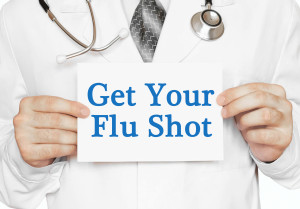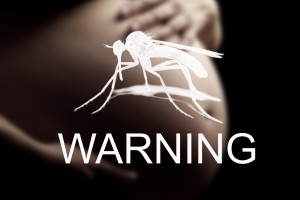By Iris Farrou
19 Oct, 2021
Breast health, Prevention
Best gyns in Buffalo, Best OB practices in Buffalo, Best OBGYN Groups in Buffalo, Buffalo OBGYN, Chouchani MD, WNY OB-GYN, WNY Ob-gyn doctors, WNY OBGYN, women's health, women's health tips
 Along with the abundance of pumpkin spiced lattes and corn mazes around the country, October is also the month that brings us a lot of pink in honor of Breast Cancer Awareness. Approximately 1 in 8 women in the U.S. are afflicted, and more than 2 million women were diagnosed with breast cancer in 2020. Chances are, you already know someone who has been affected by this type of cancer. Though educating yourself on prevention and self-care techniques when it comes to it is of high importance, there are also some ways in which you can join the global effort for awareness.
Along with the abundance of pumpkin spiced lattes and corn mazes around the country, October is also the month that brings us a lot of pink in honor of Breast Cancer Awareness. Approximately 1 in 8 women in the U.S. are afflicted, and more than 2 million women were diagnosed with breast cancer in 2020. Chances are, you already know someone who has been affected by this type of cancer. Though educating yourself on prevention and self-care techniques when it comes to it is of high importance, there are also some ways in which you can join the global effort for awareness.
How can I become involved?
- The pink ribbon is the international symbol for breast cancer, and pink has been associated with promoting awareness of it, as well as the efforts made to support women suffering from breast cancer. Wearing pink or adorning your outfit with a pink ribbon is an easy way to showcase support!
- Volunteering locally or nationally is also a good option, and the American Cancer Society (ACS) runs many programs that you can join: Relay for Life, Road to Recovery, and Making Strides Against Breast Cancer are some of them. You can also join one of the many Komen Race for the Cure events nationwide for another fundraising opportunity.
- Share facts and statistics whenever possible. You can do that in social conversations if the subject is brought up, in support of breast cancer survivors, with your coworkers, or with your kids as well if they are old enough to understand.
What are some basic facts I can share?
The National Breast Cancer Foundation and the American Cancer Society are great resources to learn more about breast cancer, access the latest news and statistics, and keep up with the latest scientific discoveries around it. These resources can back up the following US-specific facts:
- Apart from skin cancers, breast cancer is the most common among women
- 1 out of 8 women will receive a breast cancer diagnosis in her lifetime
- Every 2 minutes on average a woman in diagnosed with breast cancer
- There are over 3.8 billion breast cancer survivors
- 63% of breast cancer cases are diagnosed at a localized stage, for which the 5-year survival rate is 99%
How can I lower my risk?
Though there is no sure way to prevent breast cancer and some of the factors may be outside of your control, such as being born female and growing older, here are some basic actions you can take to lower your risk of breast cancer.
- Get regular mammograms to keep tabs on the health of your breasts. Many clinics offer free mammograms in October, so you can take advantage of this opportunity and urge your friends to do the same. Support them, go with them to the appointment, and lead by example.
- Limit alcohol or avoid it: even low intake of alcohol has been linked to increased chances of getting breast cancer, so try to limit it to 1 alcoholic drink a day.
- Maintain healthy weight: especially after menopause, it is important to maintain a healthy weight by watching your diet and exercising regularly, as weight gain and increased body weight have been linked to increased chances of breast cancer.
More
By Iris Farrou
08 Aug, 2021
Prevention
Best gyns in Buffalo, Best OB practices in Buffalo, Best OBGYN Groups in Buffalo, Buffalo OB-GYN, Buffalo OBGYN, Chouchani MD, WNY OB-GYN, WNY Ob-gyn doctors, WNY OBGYN, women's health, women's health tips
 Mosquitos are an inevitable annoyance during the warmer months for most of us. If you’re pregnant, you’re probably already overwhelmed with all the dangers you’re advised to avoid and adding to this list is now mosquito repellents. Same goes for people with sensitive skin, who are between a rock and a hard place in choosing a mosquito repellent that will not irritate their skin and having to deal with mosquito bites until this is achieved.
Mosquitos are an inevitable annoyance during the warmer months for most of us. If you’re pregnant, you’re probably already overwhelmed with all the dangers you’re advised to avoid and adding to this list is now mosquito repellents. Same goes for people with sensitive skin, who are between a rock and a hard place in choosing a mosquito repellent that will not irritate their skin and having to deal with mosquito bites until this is achieved.
What is the main danger?
While Deet, the nickname of the chemical insecticide “N, N-diethl-meta-toluamide” or diethyltoluamide, has been found to be both safe for humans and effective in protecting against mosquito-borne illnesses in does not cease to be a chemical. As such, it should always be used in moderation and it is likely to annoy your skin, especially if you are rather sensitive.
However, the consensus seems to be that it is safe to use mosquito repellents containing Deet while pregnant. Studies are still ongoing as to the exact effects/risks of mosquito repellents on pregnancies, but moderation is key when we don’t have all the answers.
How can women avoid dangerous chemicals, skin reactions, and pesky bug bites?
- Wear lightweight clothes that cover as much skin as possible; for the exposed parts of your body, try an all-natural insect repellent.
- Sandals are not a good idea, as many mosquitoes are attracted to the smell of feet—this is due to their olfactory preferences. Wear socks or long pants that you can tuck into your shoes to prevent bites on your feet.
- Burn citronella candles and/or incense. Also, ask your pharmacist or natural medicine professionals which essential oils are safe to use while pregnant or for your specific body to ward off unwanted bites.
- Wear loose clothing, and not Spandex: mosquitoes bite right through that! You may also want to consider spraying your clothes with repellents, and not your skin. In this manner, you avoid direct contact with potentially harmful chemicals.
- Avoid immersing yourself in deep-wooded areas, or in areas where a lot of vegetation grows. Mosquitoes are attracted to moisture and standing water, or watery areas that are not regularly cleaned.
- If possible, screen your windows and/or porches at your home. That way you can enjoy summer without being attacked by mosquitoes.
- If you’re traveling to an area where there are high risks of insect-borne diseases like Malaria, Zika or West Nile Virus, the potential risks of using Deet can sometimes outweigh those of the viruses. If using repellents with Deet is your best option, they should be used very sparingly. Anti-malarial medications like Doxycycline may also be prescribed.
As always, consult your gynecologist or medical care provider if you have any questions, concerns, or reactions before traveling. Staying indoors or being in a screened-in outdoor area is always a good option when your body needs ensured, natural and healthy protection and can always give you a break from having to put repellents on your body or bundle up with skin-covering clothing.
More

There are different schools of thought on how often you should visit your OBGYN, and though one side recommends that you pay your doctor a visit once a year, the other side suggests that such frequency may not be necessary. The common ground, however, is that the frequency of OBGYN visits should depend on your overall health, as well as your personal history with gynecological health matters. It also varies among women, as every woman has different needs, and of course depends on age as well.
Age
Here are some recommendations based on age that may help you determine how often you should see your OBGYN, and for what services:
- Younger than 21: Start building a relationship with your OBGYN to feel comfortable asking them any questions.
- 21-29: You should receive a General Women’s Wellness Exam that includes a Pap smear and a pelvic exam once a year.
- 30-65: It is suggested to have a pelvic exam every year, and a Pap smear every other year unless otherwise suggested by your doctor. You should also have an HPV test done at least every 5 years.
- 65 and older: As long as you have had no history of precancerous cells or cervical cancer, you do not need to have Pap smears done. If you have undergone hysterectomy you also do not need a Pap test unless you have had a reproductive cancer in the past.
Other Factors
Though a Pap smear or a pelvic exam may not be necessary every year, keep in mind that the frequency of your OBGYN visits depends on other health factors as well. For example, if you are noticing that your gynecological health is out of the ordinary—such as excessive bleeding, or too little bleeding, abnormal pain, vaginal pain or discomfort, changes in menstrual cycle—you should consult your doctor and schedule a visit even if you are not due for one.
You should also reconsider the frequency of your visits to your OBGYN if it is suggested by your primary physician, if your overall health needs attention, and depending on how sexually active you are. If you are not having a Pap smear and have no other worrisome symptoms, some schools of though suggest that having a pelvic exam done may not be necessary. However, you should remember that a pelvic exam, along with other tests, can detect ovarian cancer early and provides a screening for sexually transmitted infections.
Preventive Reasons
In addition to the age factor and other reasons you may, or may not, need to visit your OBGYN you should be aware of the following, which are preventive services:
- Anemia screening
- Contraception and prenatal care
- STIs and HIV screening
- Diabetes Screening
- UTI screening
- Breast Cancer genetic test and mammography
- Osteoporosis screening
More

With summer here, it’s time to understand the benefits of sunscreen. The reason for sunscreen is that the sun emits two harmful types of ultraviolet (UV) rays: UVA and UBA, which both lead to increased risk of skin cancer. Exposure to UVA rays has also been known to cause wrinkles. Research from the Environmental Protection Agency has established that up to 90% of skin changes from aging is actually caused by your skin’s exposure to UVA rays throughout your lifetime. Thus, limiting exposure by using sunscreen will help prevent signs of aging.
Dermatologists recommend a sun protection factor (SPF) of 15 or higher. Anyone with fair skin or a history of skin cancer should opt for SPF 30 or higher. While choosing a product with a high SPF is a good start, it’s important to understand that SPF only protects against UVB rays. In order to find coverage against UVB and UVA, look for products that are called “broad-spectrum sunscreens,” as these products include additional protection from UVA. There is no rating system to assess how well a sunscreen will block UVA rays, so reading the list of ingredients is key. To project against UVA rays, choose a product with any of the following ingredients: ecamsule, avobenzone, oxybenzone, titanium dioxide, sulisobenzone, or zinc oxide.
Another important consideration is the impact the sunscreen’s ingredients have on the environment, especially if swimming in the ocean due to fragile coral reefs. Some beaches in Hawaii and Florida ban sunscreens that contain certain chemicals such as octocrylene, oxybenzone, and octinoxate. When looking for eco-friendly options consider buying a mineral-based sunscreen with “non-nanotized” zinc oxide or titanium dioxide. While mineral-based products are not as effective at blocking UV rays, they still can offer decent coverage. A good compromise for maximum protection and environmental awareness would be to select an oxybenzone-free chemical sunscreen. Oxybenzone is a chemical known for environmental damage.
Once you have selected a broad-spectrum sunscreen with an SPF of 15+, be sure to apply it 15 to 30 minutes before sun exposure. Typically, one ounce (roughly two tablespoons) will be enough to cover the body. It’s important to apply an even and consistent layer. Regardless of how long the sunscreen is supposed to last, it’s best to reapply every two hours (more if you are exercising or swimming). Be sure to wear sunscreen on cloudy days, as well as sunny ones, as clouds do not stop UV rays. Pay attention to expiration dates, as sunscreen loses effectiveness over time. While sunscreen is a good first defense, no sunscreen can fully protect 100% against UV rays. In addition to wearing sunscreen: opt for shade when possible, wear hats and sunglasses, and aim to void the sun’s most intense hours from 10 a.m. to 4 p.m.
More
 March is National Colorectal Cancer Awareness Month. According to the American Cancer Society, colorectal cancer, or cancers of the large intestine (colon) and rectum, is the third most common cancer diagnosed in both men and women in the United States, excluding skin cancer. Researchers estimate that we will see over 97,000 new diagnosed cases of colorectal cancer in 2018 alone. While the risk of developing colorectal cancer is slightly higher for men (4.5%) compared to women (4.2%), both men and women should be aware of the risks of this deadly disease and its side effects. All adults should further efforts of early detection by receiving a colonoscopy based on age and gender-appropriate recommended screening guidelines. This March, commit to your health and talk to your doctor about your risks for colorectal cancer and when you should obtain your next screening.
March is National Colorectal Cancer Awareness Month. According to the American Cancer Society, colorectal cancer, or cancers of the large intestine (colon) and rectum, is the third most common cancer diagnosed in both men and women in the United States, excluding skin cancer. Researchers estimate that we will see over 97,000 new diagnosed cases of colorectal cancer in 2018 alone. While the risk of developing colorectal cancer is slightly higher for men (4.5%) compared to women (4.2%), both men and women should be aware of the risks of this deadly disease and its side effects. All adults should further efforts of early detection by receiving a colonoscopy based on age and gender-appropriate recommended screening guidelines. This March, commit to your health and talk to your doctor about your risks for colorectal cancer and when you should obtain your next screening.
Signs and Symptoms of Colorectal Cancer
You may be diagnosed with colorectal cancer if you experience any of the following symptoms:
- A change in bowel habits that could include diarrhea, constipation, or a narrowing of the stool that lasts for more than a few days.
- A feeling that you need to have a bowel movement that is not relieved by having one.
- Rectal bleeding.
- Blood in the stool that may give it a dark appearance.
- Abdominal pain, cramping, or gas.
- Weakness or fatigue.
- Weight loss.
The Importance of Receiving a Recommended Colonoscopy
Colorectal cancer is one form of cancer that can be prevented in some instances. A colonoscopy can identify cancer-indicating polyps so they can be removed before they evolve into cancerous cells. During the colonoscopy procedure, your doctor will examine your entire colon and rectum using a hollow, flexible, lighted tube with a tiny video camera affixed to the end. Once inserted, your doctor will use the camera to examine your colon for polyps, which, if found, can be removed during the procedure, immediately reducing your chances of a polyp developing into colorectal cancer.
When Should You Obtain a Screening?
Talk to your doctor about your unique health risks and about when and how frequently you should obtain a colonoscopy. The United States Preventative Task Force and the American Cancer Society recommend that men and women should receive a colorectal cancer screening starting at age 50, and every ten years after that until they reach age 75. If you are at a higher known risk for colorectal cancer based on family history, a personal history of an inflammatory bowel disease, or other risk factors, your doctor may recommend receiving your first colonoscopy before age 50. Follow this link for more information about colorectal cancer screening recommendations from the American Cancer Society.
Encourage the Men in Your Life to Get Tested
While both men and women should receive regular colorectal cancer screenings in consultation with their doctor, women should encourage the men in their lives to be tested. Due to perceptions of the uncomfortable nature of the exam and its necessary preparatory work, some men tend to be apprehensive and choose to procrastinate regular colonoscopy screenings. Remind the men in your life of the importance of early detection, the risks that men face, and how much you need them to live a long and healthy life with you.
If you believe you may be at a risk of developing colorectal cancer, or if you believe you may already be experiencing symptoms, talk to your doctor today.
More
 This year’s flu season is on track to be the worst in nearly ten years—and it’s nowhere near over yet. According to a recent report by the Washington Post, Tens of thousands of Americans have been hospitalized so far, and 37 children have lost their lives battling this season’s flu epidemic. If you have been hesitant to get vaccinated, it’s time to reassess the reasons why the Centers for Disease Control and Prevention (CDC) and your doctor recommend the flu vaccine, and how it can minimize your chances of being another victim of this year’s dangerous flu strain.
This year’s flu season is on track to be the worst in nearly ten years—and it’s nowhere near over yet. According to a recent report by the Washington Post, Tens of thousands of Americans have been hospitalized so far, and 37 children have lost their lives battling this season’s flu epidemic. If you have been hesitant to get vaccinated, it’s time to reassess the reasons why the Centers for Disease Control and Prevention (CDC) and your doctor recommend the flu vaccine, and how it can minimize your chances of being another victim of this year’s dangerous flu strain.
What are the Symptoms of the Flu?
Flu symptoms tend to come on quickly and unexpectedly. If you experience any of the following symptoms, you may have contracted the flu. See your doctor as soon as possible for a diagnosis and treatment:
- Fatigue and weakness
- Severe muscle and joint pain
- Fever, flushed skin
- Headache
- Dry cough
- Red, watery eyes
- Sore throat
- Runny nose
- Vomiting or diarrhea, often more common in children than adults
If you have any of the following symptoms, seek medical care immediately, as they could be an indication of a severe flu virus:
- Difficulty breathing
- Pain in your chest or abdomen
- Sudden dizziness
- Difficulty focusing
- Severe vomiting
What are the Benefits of the Flu Vaccine?
The CDC advises that the single best way to protect yourself from both falling ill from the flu and serving as a carrier is to get the flu vaccine each year. Approximately two weeks after the vaccine is administered, antibodies are developed in the body that protect against infection using the viruses in the vaccine. It is important to obtain a flu vaccine annually, because each year, the distributed vaccine is designed to guard against those virus strains that researchers believe will be most prevalent during the coming flu season. The more Americans who obtain a vaccination, the less the virus can spread across communities.
Isn’t It Too Late to Get Vaccinated Now?
You do not need to obtain a flu vaccine at the start of the flu season to be protected. While the flu season is typically considered to begin in October and last through May, obtaining a vaccine at any time during the flu season can still protect you and minimize your chances of becoming ill or spreading the illness to others.
I’m Pregnant. Can I Get the Flu Vaccine?
Pregnant women should be vaccinated against the flu, as it is their best form of protection against the virus. The flu can cause even more complications and severe symptoms in pregnant women. When pregnant, changes to your immune system, heart, and lungs make women more susceptible to viruses and infections such as the flu, which can result in hospitalization, and—in the most severe cases—death. The flu vaccine protects pregnant women during and after their pregnancy, and it also protects the baby from contracting the virus for several months after birth.
What Else Can I do to Prevent the Flu?
In addition to obtaining a flu vaccine, follow these tips to minimize your chances of contracting the flu:
- Avoid exposures to anyone who is sick.
- Wash your hands regularly with soap and water.
- Do not touch your eyes, nose, or mouth, as you could transfer germs you picked up on your hands into your body.
- Keep surfaces in your home and office clean and disinfected.
- If you have children who go to school, keep items that travel from the classroom to the house sanitized as well, such as toys, lunch bins, and other objects.
- Take care of yourself by getting plenty of rest, drinking plenty of water, eating a balanced diet of fresh, healthy foods, staying physically active, and managing stress.
If you do contract the flu virus, be diligent not to spread the vaccine to others. Stay home, do not go to work, cover your nose and mouth when you sneeze or cough, and avoid contact with others.
If you feel you may have contracted this year’s flu strain, contact your doctor for an appointment.
More
 Individuals living with type II diabetes live their lives balancing on a dangerously thin line. They must constantly monitor their blood, manage symptoms, and try to manage the lifestyle choices that impact their health. If you or a loved one are suffering from type II diabetes, then you know all too well about the day-to-day struggles of this often-avoidable disease. The good news is that there are choices you can make that will help to lower your risk and help you to protect yourself from this damaging, and potentially deadly condition.
Individuals living with type II diabetes live their lives balancing on a dangerously thin line. They must constantly monitor their blood, manage symptoms, and try to manage the lifestyle choices that impact their health. If you or a loved one are suffering from type II diabetes, then you know all too well about the day-to-day struggles of this often-avoidable disease. The good news is that there are choices you can make that will help to lower your risk and help you to protect yourself from this damaging, and potentially deadly condition.
What is Type II Diabetes?
Type II diabetes is a condition that causes glucose, or sugar, levels in the blood to rise to abnormal levels, a state known as hyperglycemia. In addition, individuals with type II diabetes do not produce proper amounts of insulin, the chemical that helps to regulate glucose levels, leading to further complications. According to Healthline, 29.1 million Americans suffer from diabetes, yet 8.1 million may be undiagnosed or unaware of their condition. That means more than one in every ten adults age 20 or older have diabetes. These staggering numbers underscore the need for education, and self-awareness, to help reduce the number of new diagnoses each year.
Type II Diabetes Risk Factors
Type II is the most common form of diabetes. You may be at an increased risk of developing type II diabetes if you:
- Are overweight
- Have an immediate family member with type II diabetes
- Experienced gestational diabetes during pregnancy
- Have already been diagnosed as being prediabetic
- Have high blood pressure
- Have high cholesterol
- Smoke
How to Lower Your Risk for Type II Diabetes
Living a healthy lifestyle, which includes staying active and maintaining a healthy weight, are essential to lowering your risk for type II diabetes. Experts suggest that to minimize your chance of developing the disease, you should follow the tips below:
- Maintain a healthy weight. Obesity is a serious risk factor for type II diabetes. If you are overweight, talk to your doctor about a weight-loss plan that will work for you.
- Stay active. An important part of any plan to maintain a healthy weight needs to include regular physical activity. The average adult should get at least 30 minutes of physical activity five days a week. If you are not currently getting enough exercise, talk to your doctor about how to get started.
- If you were diagnosed with gestational diabetes, monitor your glucose levels. Six to 12 weeks after your baby is born, your doctor will want to test your blood glucose levels. If levels are still too high, your doctor may diagnose you as having type II diabetes. If your levels are normal, your doctor will likely want to continue testing your glucose levels every three years to ensure you have not developed the condition.
- Breastfeed your newborn. If you were diagnosed with gestational diabetes, your doctor will likely suggest that you breastfeed your newborn. Doing so will help ensure your baby receives proper nutrients and will help you burn calories.
If you believe that you may be at risk for developing type II diabetes, do not wait to talk to your doctor. He/she can help you put together a plan to start making the types of lifestyle changes that can help you lower your risk and maintain your overall health.
More
Western New York may be known for its epic winter storms, but the summer heat can be just as dangerous. As we reach the peak of hot summer months, it’s important to understand the dangers of such heat-related conditions as sun poisoning, sunstroke, and dehydration. Learn the risks associated with these conditions, and how you can protect yourself and your family while enjoying the final days of summer.
The Threat of Heat-Related Illnesses
Heat-related illnesses pose a threat to adults, seniors, and children any time you’re exposed to abnormal or prolonged amounts of heat and humidity without adequate fluid intake or relief. If not properly treated, heat-related illnesses can cause serious health complications, and in the most devastating cases, even death.
Dehydration
Dehydration can occur when your body doesn’t have enough water. Without proper hydration, your body can not properly function. On hot summer days, you lose more water than usual from sweating, especially if active. If the fluids you lose are not properly replaced by drinking fluids and eating foods that contain water, you place yourself at risk of dehydration.
Symptoms of mild dehydration include thirst, dry mouth, only urinating a small amount, urine that is a dark yellow color, headache, and muscle cramps. Symptoms of more severe dehydration may include no urination at all, very dry skin, dizziness, rapid heartbeat, rapid breathing, fatigue, and fainting.
If you believe you may have mild to moderate dehydration, stop any activity and rest. If you’re outside, seek shade or a cool, air conditioned area. Remove excess layers of clothes, prop up your feet, and drink a rehydration drink such as water, juice, or a sports drink to replace fluids. Prevent dehydration before symptoms occur by drinking plenty of water before, during, and after any activity or long-term heat and sun exposure.
Sun Poisoning
Sun poisoning is an extreme case of sunburn. Symptoms initially appear the same as a sunburn, but can escalate quickly to include swelling, large blisters, headache, fever, dizziness, nausea, dehydration, and fainting. Individuals with pale skin, especially redheads, are particularly susceptible to sun poisoning in summer months. To avoid sun poisoning, wear protective clothing. Apply and reapply an SPF of at least 15 or 30 throughout the day, seek shade, and avoid being exposed to the sun during the hottest parts of the day.
If you believe you may have a serious case of sun poisoning, seek medical attention promptly. If you feel your symptoms are less severe, you can consider taking ibuprofen to ease the pain, applying cold compresses made of equal parts milk and water to damaged areas, and most importantly, hydrating.
Sun Stroke
Also often referred to as heat stroke, this heat-related condition is the most severe heat-related illness. When your body’s heat-regulating system is overwhelmed by excessive heat, it poses a life-threatening emergency. Immediate medical care should be obtained. Symptoms of sun stroke include warm and dry skin, a high fever (typically over 104 degrees), rapid heart rate, loss of appetite, nausea, vomiting, and headache.
If you believe you may be experiencing sun stroke, call for emergency medical care. If you cannot call for assistance promptly, move to a cool place to rest. Remove excess clothing, drench your skin with cool water, and fan your skin. If you have ice available, place ice bags in your armpit and groin areas. Also, be sure to drink cool fluids.
To avoid sun stroke, stay protected from the sun, wear sunscreen, a hat, and sunglasses, and seek shade when outdoors. Dress in lightweight, light colored, loose-fitting clothing. While being active outdoors, take frequent breaks, hydrate frequently, and cool skin with cold water.
Stay Safe
While we all want to maximize our enjoyment of warm summer days, it’s important to not spend too much time outside in the sun and heat, especially if you’re being active. Make sure to stay hydrated, avoid being outside during peak sun and heat hours, wear appropriate clothing, sunscreen, sunglasses, and a hat, and seek shade whenever possible. By following these tips, you can enjoy summer days, without the risk of illness. If you have any questions or concerns about heat-related illnesses, and your risks, talk to your doctor.
More
 Summer is the perfect time of year for all our favorite warm-weather activities; from drinking cool glasses of sweet lemonade, to swinging in hammocks under the shade, to getting out and being active. What better way to enjoy a low-impact summer-time activity that requires a minimal investment in equipment and supplies, than by bike riding. Summertime bike riding is the perfect way to enjoy warm summer days and get fit. Don’t take this easy-breezy activity for granted, though. Bike riding is not without its safety hazards. Before you pedal the pavement, read our summer bike safety tips (and yes, that includes wearing a helmet!).
Summer is the perfect time of year for all our favorite warm-weather activities; from drinking cool glasses of sweet lemonade, to swinging in hammocks under the shade, to getting out and being active. What better way to enjoy a low-impact summer-time activity that requires a minimal investment in equipment and supplies, than by bike riding. Summertime bike riding is the perfect way to enjoy warm summer days and get fit. Don’t take this easy-breezy activity for granted, though. Bike riding is not without its safety hazards. Before you pedal the pavement, read our summer bike safety tips (and yes, that includes wearing a helmet!).
- Protect Your Head. Even though the law only requires children under the age of 14 to wear safety certified bicycle helmets in New York, adults should wear them too. According to data provided by the U.S. Department of Transportation, each year approximately two percent of motor vehicle crash deaths are bicyclists, and in a majority of bicyclist deaths, the most serious injuries are to the head. In addition, helmet use has been estimated to reduce the odds of head injury by 50 percent, and the odds of head, face, or neck injury by 33 percent.
- Be Alert. Whether you’re biking on a busy road with two-way traffic, or on a quiet neighborhood side street, always be alert for pedestrians, other bikers, pets, vehicles, and unexpected road hazards. Learn to always scan ahead, center, left, and right. Resist the temptation to look down at the ground. Keep your head up to scan the upcoming area for obstacles or hazards.
- Be Seen. Especially if you’ll be biking on main roads, utilize proper and expected hand signals:
- Right Turn: Extend your right arm out straight with all fingers extended or use your index finger to point right.
- Left Turn: Extend your left or right arm sideways and bend your arm at a 90-degree angle at the elbow, hand pointing down, and the palm of your hand facing backwards.
- Also, make sure your bike is equipped with a horn, and a reflector and light for evening travel.
- Travel Safely in Pairs and Groups. Biking can be a great group activity, but make sure to do it safely. Whenever biking with another person, or with a group, ride in a single file line with enough space between bikers that if one has to stop abruptly, you won’t be at risk of a collision.
- Ride on the Right Side of the Road. Unlike pedestrians, bikers are required by law to ride with traffic. Not against it. Bike on the right side of the road. Failure to follow traffic rules could result in a law enforcement ticket.
- Have Fun. Getting out and being active is one of the best ways to maximize the summer sun before we all have to trade in our lemonade and sandals for pumpkin spice lattes and fur-lined boots. Enjoy what’s left of the summer by biking your way to fitness. Just remember to put your safety first in every situation.
More
 There may be less buzz about the Zika virus this summer, but that doesn’t mean that women — especially pregnant women — don’t still need to be extremely cautious and aware of the risks when traveling and spending time outside. Zika, the virus transmitted by mosquitos, sex, and blood transfusions, and which may cause birth defects when passed from mother to fetus, is still a threat to travelers of South and Central America, and in some southern American states.
There may be less buzz about the Zika virus this summer, but that doesn’t mean that women — especially pregnant women — don’t still need to be extremely cautious and aware of the risks when traveling and spending time outside. Zika, the virus transmitted by mosquitos, sex, and blood transfusions, and which may cause birth defects when passed from mother to fetus, is still a threat to travelers of South and Central America, and in some southern American states.
In addition, there is still no vaccine or medicine to treat Zika, which means the best way to stay safe from the virus is through prevention. All women, but especially those who are pregnant or thinking of becoming pregnant, should understand the latest threats, travel safety recommendations, and most importantly, how to stay safe and protected from the threat of contagion this summer.
What We Know About Zika
The type of mosquito that can spread the Zika virus — The Aedes species of mosquito — naturally occurs in many areas across the United States, as well as in Central and South America and other warm climates across the globe. As of May 2017, the Centers for Disease Control and Prevention (CDC) estimate that there were at least 50 countries and territories with active Zika virus transmissions.
While it’s been known that Zika can cause the birth defect microcephaly when transmitted from a mother to her fetus, doctors have also found a link between Zika and other types of birth defects. We also now know that Zika does not only put fetuses at risk. The CDC is researching the link between Zika and Guillain-Barré Syndrome, a rare autoimmune disorder that may lead to life-threatening paralysis.
Summer Travel Plans? Stay Protected from Zika
If you plan to travel this summer, be aware of both the national and international areas where Zika poses the highest risk. According to the CDC, in the United States, the areas at the highest risk of Zika include Brownsville, Texas, and Miami-Dade County, Florida. In addition, pregnant women should not travel to any countries or areas that have received a Zika-related travel warning.
This map from the CDC summarizes the countries and territories that pose the highest risk. Currently, the CDC has issued Zika-related travel notices for Mexico, the Maldives, parts of the Caribbean, Central and South America, and several of the Pacific Islands.
The Latest CDC Tips for Zika Prevention
As long as the threat of Zika remains high, continue to follow the latest prevention tips and best practices from the CDC:
- Protect yourself from exposure to mosquito bites by wearing insect repellent during the day and night, wearing long-sleeved shirts, and eliminating any standing water from your property.
- Especially if pregnant or planning to become pregnant, do not travel to areas with high risks of Zika.
- Most adults who contract Zika won’t demonstrate symptoms, which is why pregnant women whose partners have traveled to an area with an elevated Zika risk should follow safe sex practices.
For more on the latest from the CDC regarding Zika, click here. If you are pregnant or planning to become pregnant, and have questions or concerns about the risk of Zika in your area, talk to your OBGYN.
More
 Along with the abundance of pumpkin spiced lattes and corn mazes around the country, October is also the month that brings us a lot of pink in honor of Breast Cancer Awareness. Approximately 1 in 8 women in the U.S. are afflicted, and more than 2 million women were diagnosed with breast cancer in 2020. Chances are, you already know someone who has been affected by this type of cancer. Though educating yourself on prevention and self-care techniques when it comes to it is of high importance, there are also some ways in which you can join the global effort for awareness.
Along with the abundance of pumpkin spiced lattes and corn mazes around the country, October is also the month that brings us a lot of pink in honor of Breast Cancer Awareness. Approximately 1 in 8 women in the U.S. are afflicted, and more than 2 million women were diagnosed with breast cancer in 2020. Chances are, you already know someone who has been affected by this type of cancer. Though educating yourself on prevention and self-care techniques when it comes to it is of high importance, there are also some ways in which you can join the global effort for awareness.







